Ford Ranger returns
The Ford Ranger is back for the first time since 2011, but its a very different truck than the one you remember and filled with the latest tech. Fox News Autos Editor Gary Gastelu went to Jamul, Calif., to find out if it's any good.
The Ford Ranger is back. That is to say, it’s back in the USA.
Ford introduced a new one to the rest of the world in 2012, but decided not to sell it here as it focused on full-size trucks instead. Considering how well the F-Series has been doing in recent years, it probably wasn’t a bad call. That’s especially true when you look at Chevy Silverado sales, which have been flat since the Colorado returned after a short break in 2015 and started cannibalizing some customers.
But Colorado buyers get to drive home in the truck that they want, rather than a monstrosity they don’t really need. Meanwhile, demand for the Tacoma has been so strong since Ford got out of the small truck game that Toyota had to spend $150 million to increase production at one of the two factories that makes it. So, with a fear of missing out finally getting the best of it, Ford has re-engineered the Ranger for U.S. consumption and retooled a former compact car plant in Michigan to build it in.
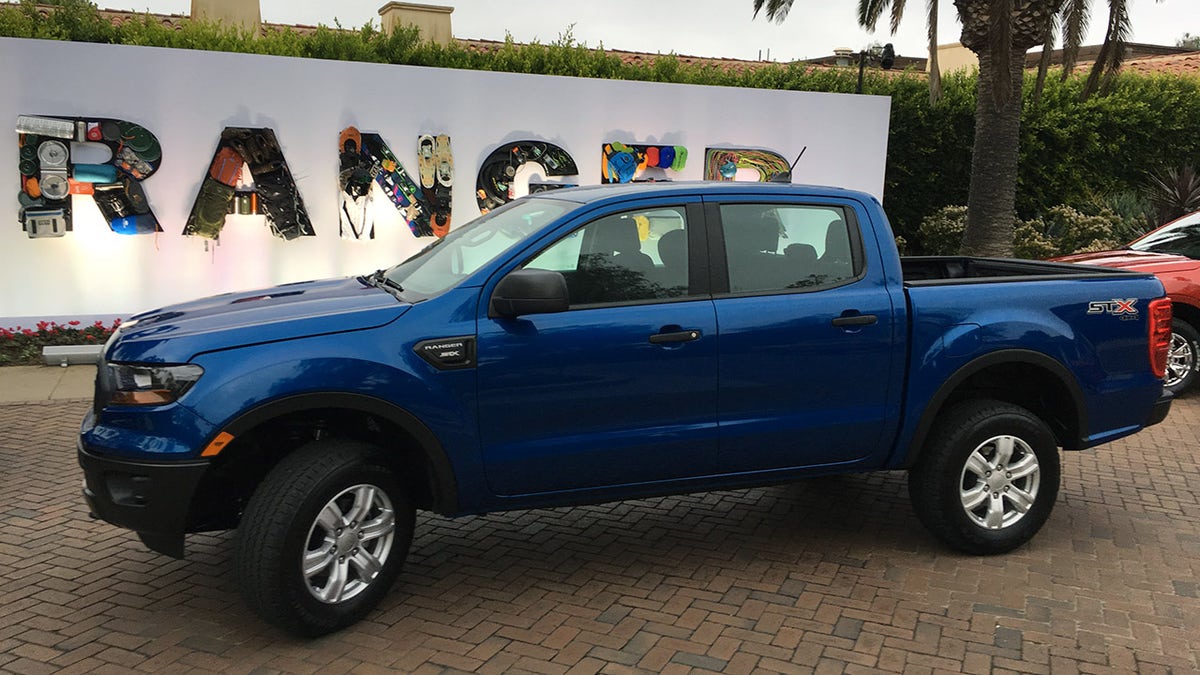
(Fox News Autos)
Unlike the F-150, which you can order in roughly six or seven gazillion configurations, when the Ranger hits showrooms in January it will initially be offered in just two cab sizes and three trim levels that are all equipped with a powerful 2.3-liter turbocharged four-cylinder engine and 10-speed automatic transmission. That means there’s no bargain-basement Ranger, and prices start at $25,375, which compares favorably to the competition's V6 trucks.

(Fox News Autos)
The Ranger team says it aimed the single powertrain at providing efficiency and capability in one package so shoppers wouldn’t have to choose between the two, and it was right on target. The engine provides 270 hp and 310 lb-ft of torque, the latter tops among gasoline-powered small pickups. It also delivers 23 mpg in 2wd trucks and 22 mpg powering 4x4s, both figures best in class. So is the 1,860 payload rating on two-wheel-drive SuperCab models, while all Rangers are rated to tow up to 7,500 pounds, which is more than some F-150s can handle.
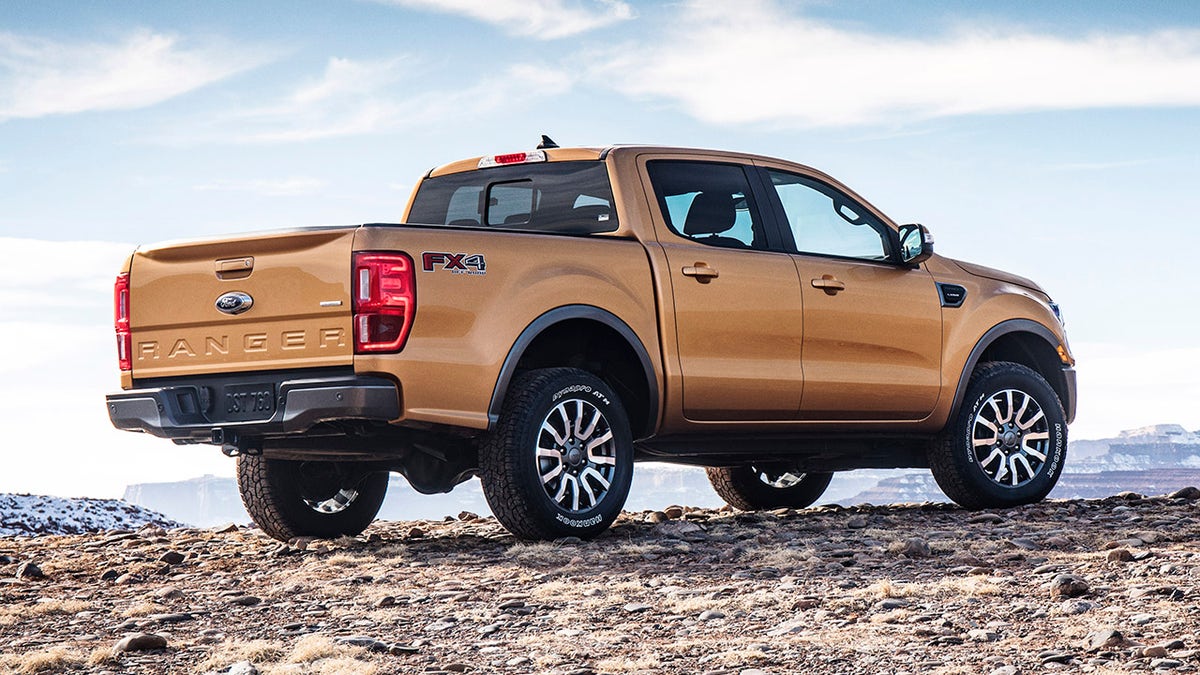
(Ford)
Those are strong numbers, but since the Ranger is being marketed mostly to “lifestyle” buyers who are hooked on a feeling, rather than cold and calculating fleet managers, Ford ladled on plenty of refinement and features, too.
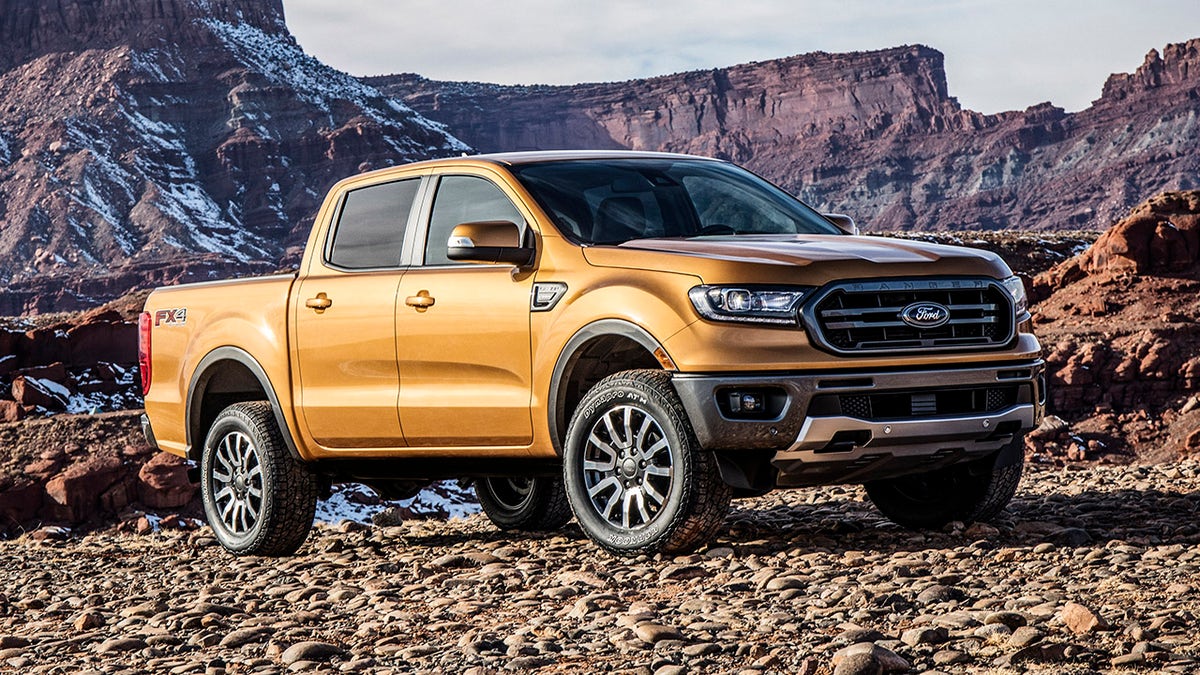
(Ford)
The Ranger has a softer, sportier look than the F-150 that shouldn’t scare off anyone cross-shopping it with a crossover. The cabin is roomier than the Tacoma’s and about the same as the Colorado’s, which means compact car-size accommodations. SuperCabs and four-door SuperCrews are the exact same length overall, but have six- and five-foot-long beds, respectively. There are only 44.8 inches of space between the wheelhouses, so you’ll have to perch that plywood for the home projects on top of them, but an ATV or two dirt bikes fit fine.
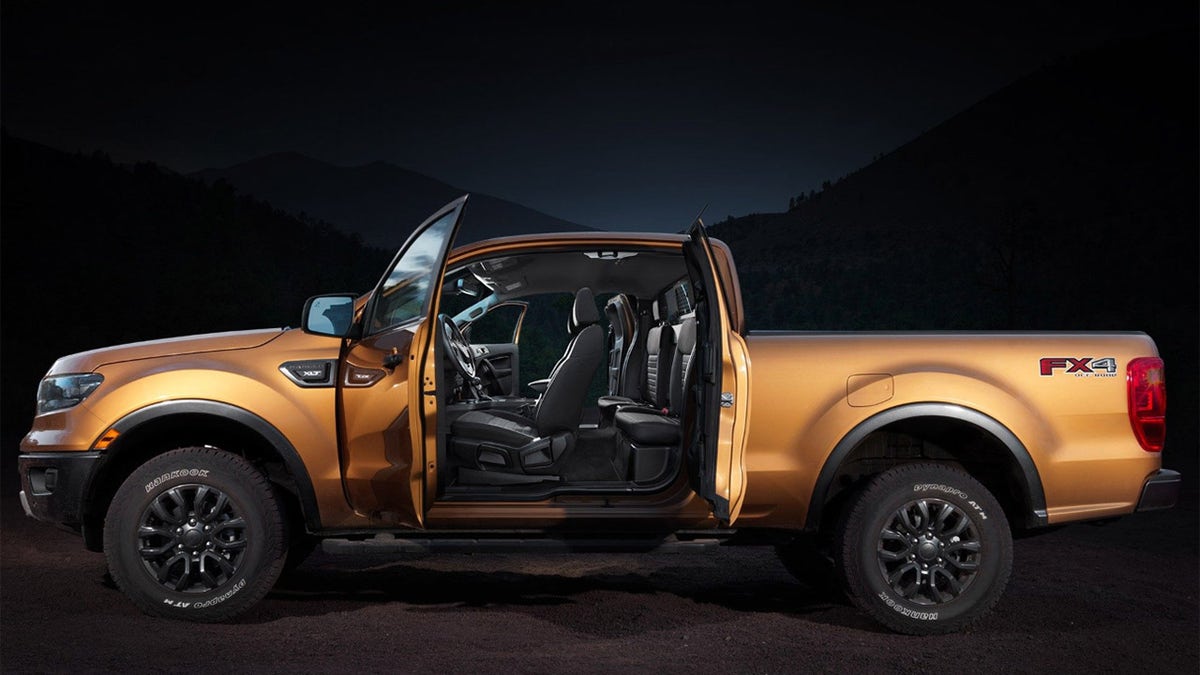
(Ford)
The interior design doesn’t break any new ground, but is perfectly functional. Entry-level XTs come with an old-school radio, so there are plenty of knobs and buttons to augment the touchscreen infotainment system that makes an appearance on higher trims. Aside from the armrests, all of the surfaces that you don’t sit on are hard plastic, unless you go for a top-of-the-line Lariat that gets a soft-touch toupee on the dashboard to complement its heated and leather-upholstered seats.
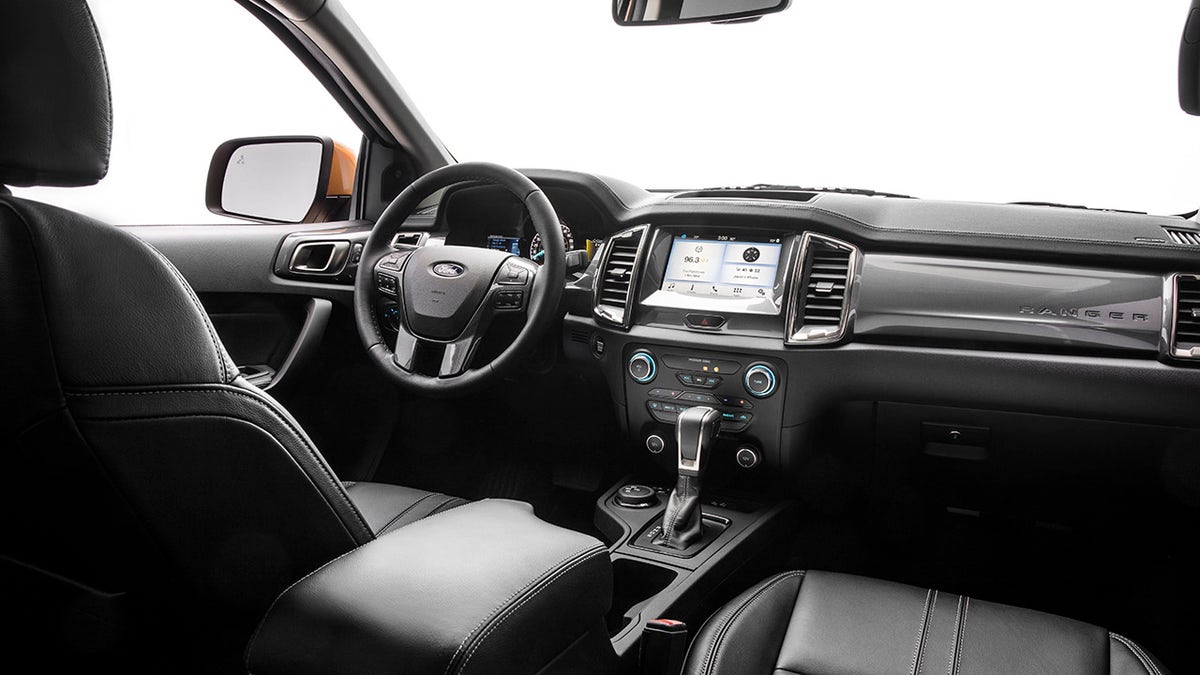
(Ford)
The Ranger is exceptionally quiet, and its ride comfortable and controlled. It has a limber, yet well-damped suspension that’s adept at handling both rough streets and winding mountain roads, and is a step or two above the Colorado and Tacoma in this regard. The engine feels as strong as its specifications suggest and the transmission never gets too busy, despite the multitude of gears it has to choose from. Over the course of a 150-mile route filled with fast California highways and two-lanes rising 4,000 feet into the sky I averaged a spot-on 23 mpg without trying to.

(Ford)
I also took a Ranger with a 30-foot-long, 6700-pound boat attached to it for a spin and hardly knew it was there, but the blind-spot warning system did. It can be programmed to account for trailers of varying lengths. Automatic emergency brakes are standard across the lineup, and lane-keeping assist and adaptive cruise control are available.
If it sounds like Ford put too much effort into pleasing the country club crowd, don’t worry. All of the 4x4s can be ordered with an FX4 package that comes with tougher shocks, extra underbody protection, tow hooks, an electronic locking rear differential and a bevy other off-road-focused features. These include Ford’s Trail Control, which is a low-speed cruise control that can operate as slowly as 1 mph and allows you to focus on steering as you navigate tough trails.
WHAT DO YOU THINK ABOUT THE NEW FORD RANGER? LET FOX NEWS AUTOS KNOW ON FACEBOOK
But not too tough. Even with the FX4 gear, the Ranger only has 8.9 inches of ground clearance and isn’t a hardcore off-roader in the vein of a Tacoma TRD Pro or Colorado ZR2, but it can scramble up hills like a Tough Mudder and take pretty big bumps at speed without bottoming out.
Ranger prices top out above $45,000, but you get what you pay for. Ford knew that if it was going to return to this segment it would have to make a splash, and it did. Apples to apples and overall, the Ranger is the most impressive truck on sale today.
Unfortunately for Ford, there is another one on the way soon. It’s the Jeep Gladiator, a hotly-anticipated Wrangler-based, open-top truck that appears to be more than ready for battle. But Ford already has a counterattack planned for 2020 when it goes after the Wrangler with a yet to be revealed Ranger-based Bronco SUV.

